01 Brief:
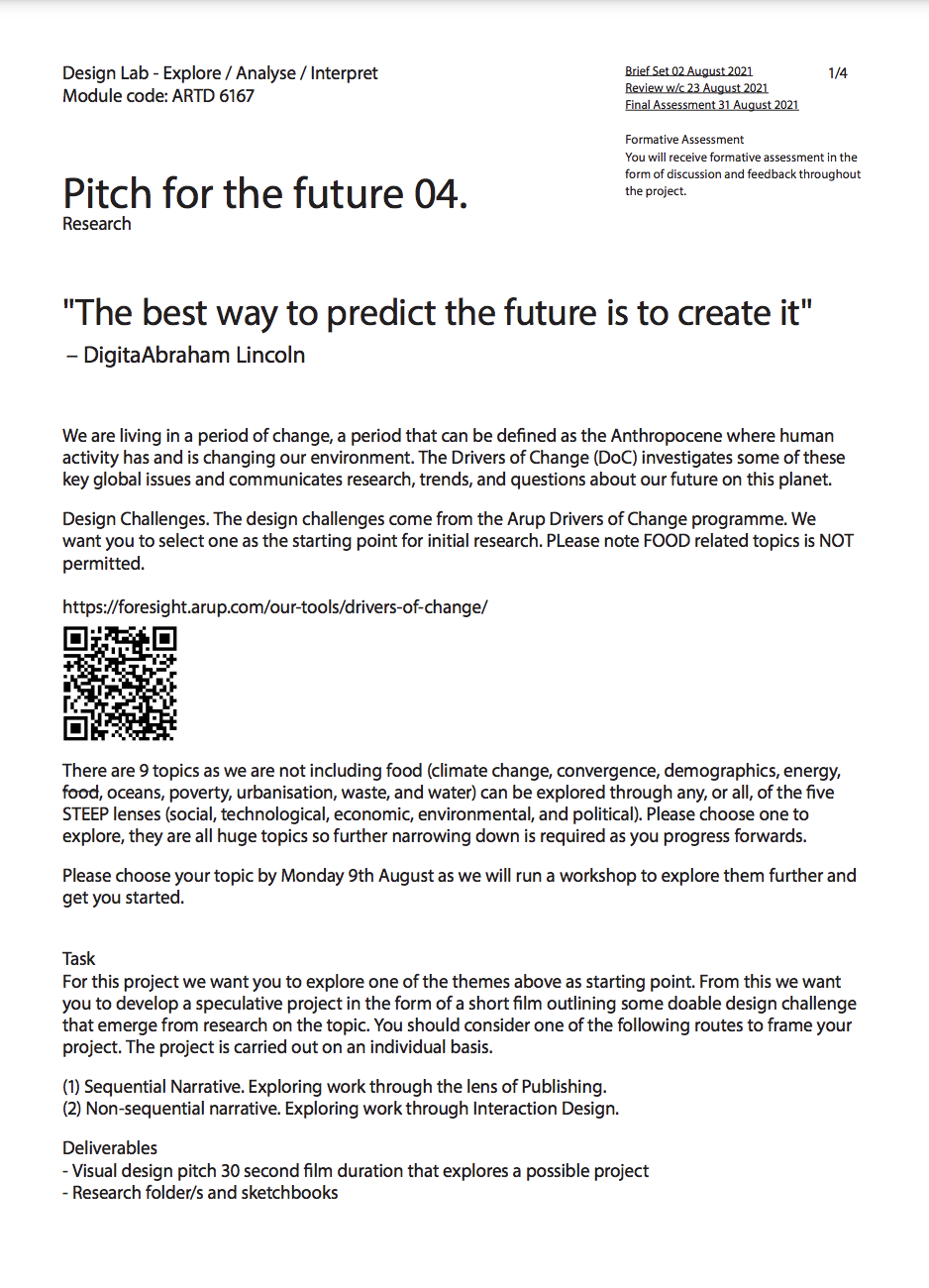
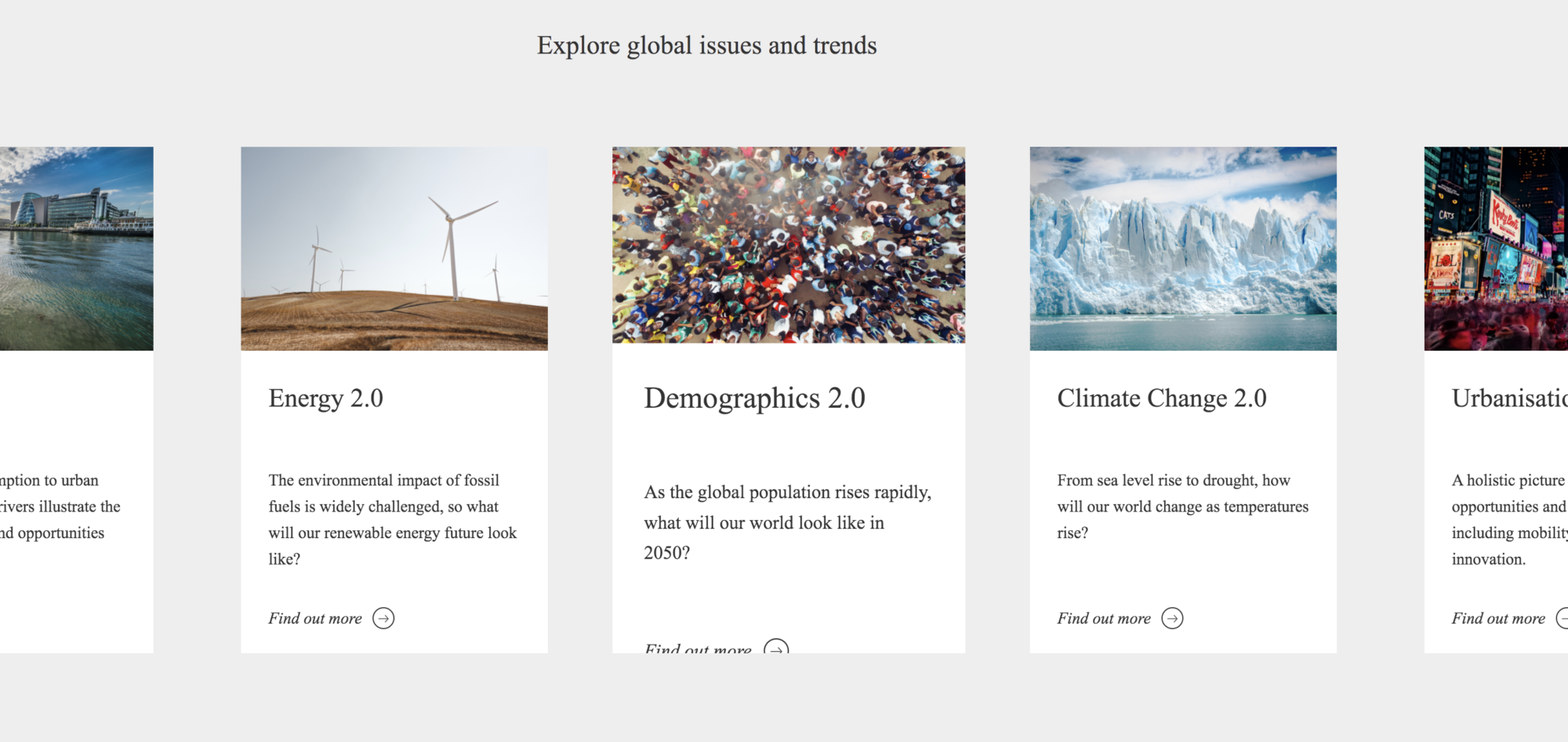
After reading all the topics on this web, I decided to focus on Climate Change.
- What is the problem you’re trying to solve?
How to slow or stop the steady rise of sea level without affecting human life and ocean health?
- There is a fact that The earth is in an interglacial period, and temperatures will continue to rise in the future, no matter how well we manage global warming.
- Take a stab at framing this challenge as a question:
Can we use technology and engineering instead of trying to change the atmosphere to cool the earth?
my research plan is as follows:
- Conducting a brainstorm to understand which factors are related to climate change.
- Categorize the content I have collected (1. happened and there are already ways to deal with it/ 2. something that is happening, and still looking for the methods to solve or slow down the pace/ 3. something that not going to happen anytime soon but it could happen in the future )
- Find out something furthest away from us on the timeline (future), then Research information about this
- trying to think about the way to solve it and make it visualize.
Step 1:
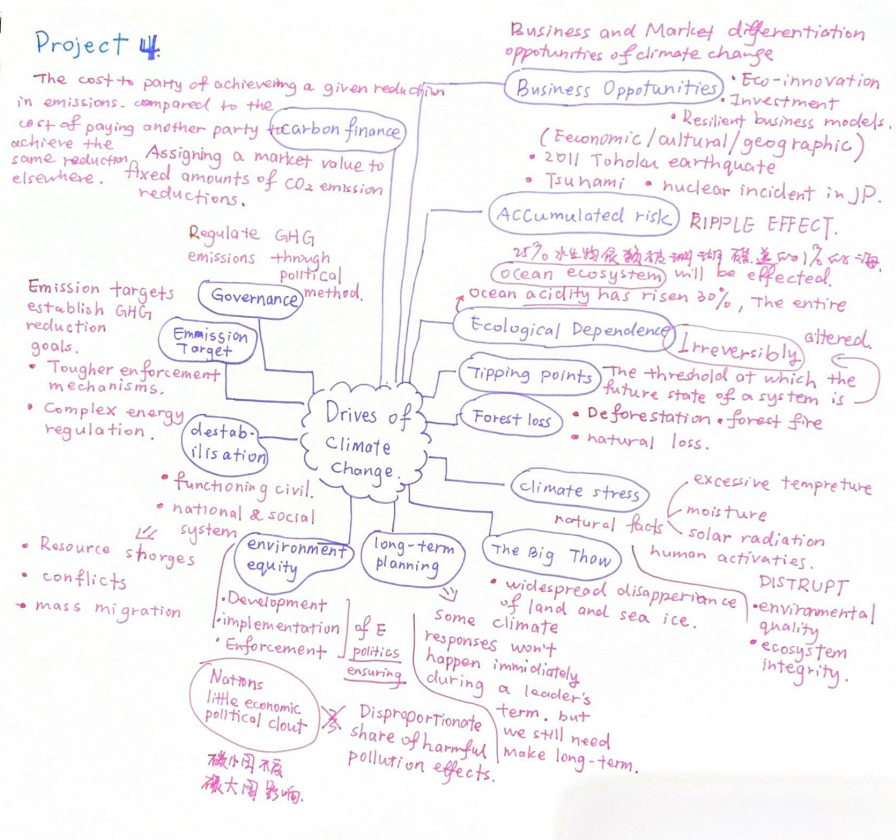
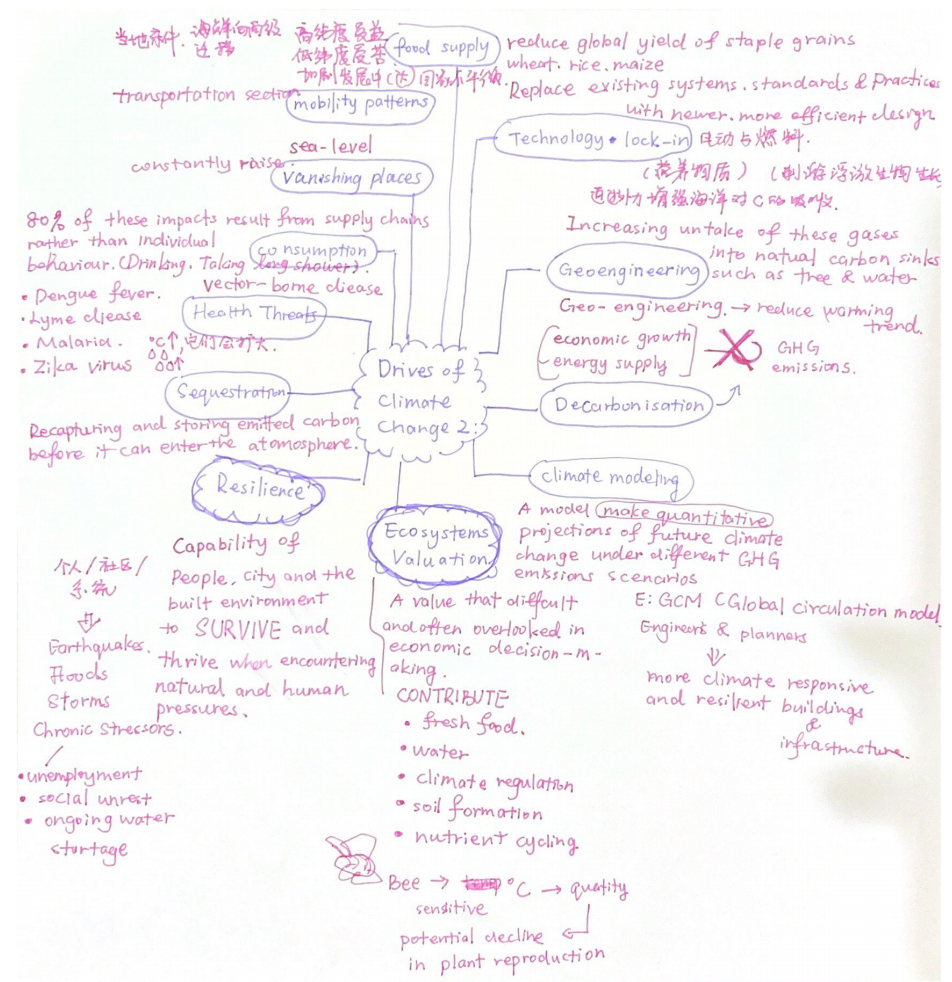
Step 2: Category
I divided the 24 related points into 3 categories: the left column means something happened and there are already ways to deal with it.
The middle column represents something happening and still developing the method to overcome or slow down the pace.
The right column represents It’s not going to happen anytime soon but it could happen in the future.
Step 3: Second Category
In my secondary classification, the third category I sorted out events in the last video and organize them based on the time. After tidying up, I found there are five things that furthest away, and still waiting for having plan: GEOENGINEERING, Tipping Points, LONG-TERM Planning, Vanishing Places and The Big Thaw.
STEP 4: Research
GEOENGINEERING
- Geoengineering is the deliberate large-scale intervention in the Earth’s natural systems to counteract climate change.
There is wide range of proposed geoengineering techniques. Generally, these can be grouped into two categories: Solar Radiation Management (SRM) and Greenhouse Gas Removal (GGR) or Carbon Geoengineering.
- Why Consider It?
Reducing emissions of greenhouse gases is the safest way to counter climate change. While reducing emissions of greenhouse gases is necessary – indeed essential – it may not be sufficient to maintain a stable climate and healthy oceans.
- The level at which we will manage to stabilise greenhouse gases. This is a function of political will and technical ability.
- The responsiveness of the climate system to increased greenhouse gas levels. We may be lucky and have a small climate response to a large change in greenhouse gases. Or we may be unlucky and have a large climate response to a small change in greenhouse gases. No-one knows for sure.
Tipping Points
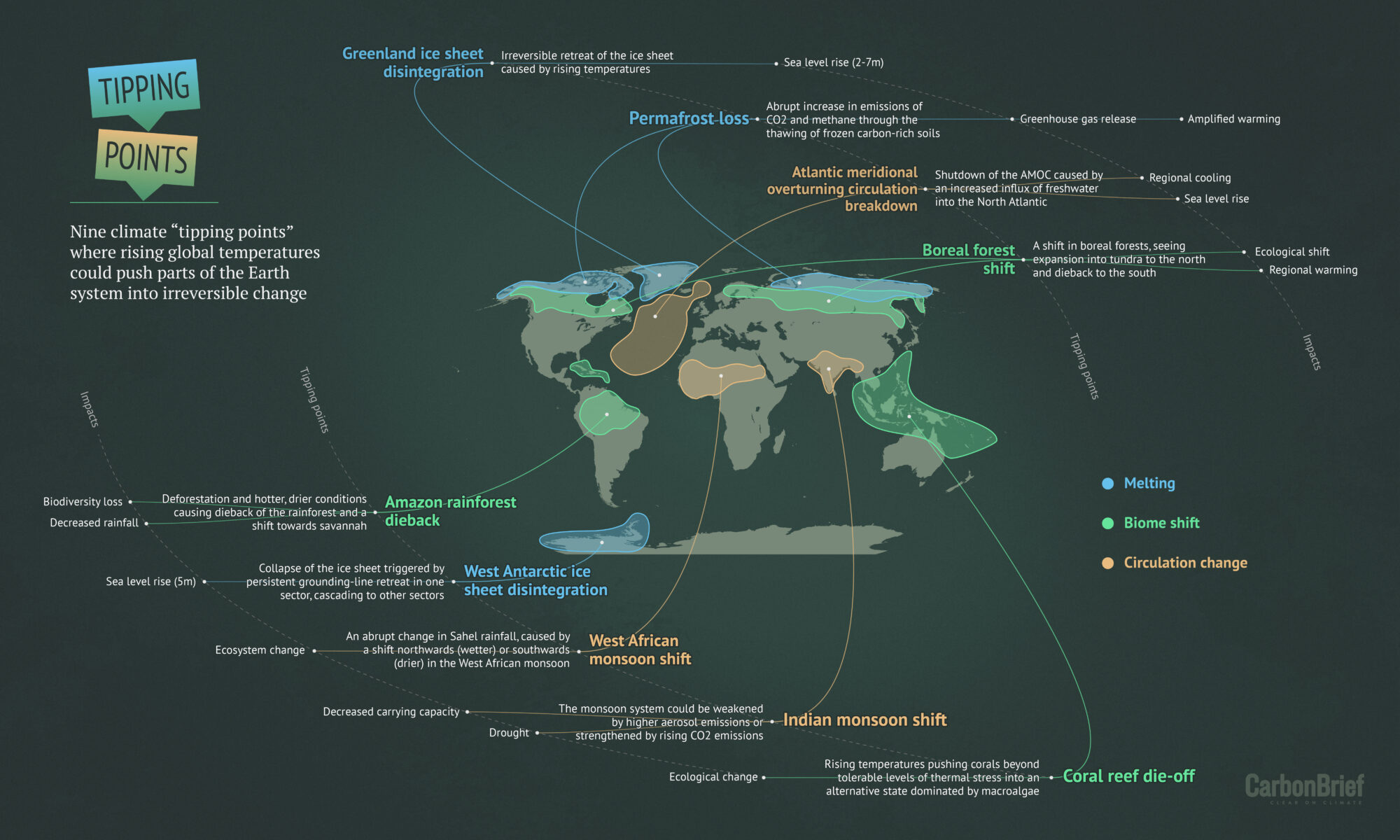
Ice sheets and ocean currents at risk of climate tipping points can destabilise each other as the world heats up, leading to a domino effect with severe consequences for humanity, according to a risk analysis.
Broadly, these impacts reflect gradual changes caused by a climate that is steadily warming. Scientists have estimated, for example, that for every tonne of CO2 emitted into the atmosphere, summer sea ice cover in the Arctic shrinks by three square metres.
However, there are parts of the Earth system that have the potential to change abruptly in response to warming. These systems have “tipping points”, explains Prof Tim Lenton, director of the Global Systems Institute at the University of Exeter. He tells Carbon Brief:
“A climate tipping point, or any tipping point in any complex system, is where a small change makes a big difference and changes the state or the fate of a system.”
The gradual increase in global temperature sees block after block removed from the tower and placed on top. As time goes on, the tower becomes more and more misshapen and unstable. At some point, the tower can no longer support itself and it tips over. the amount of energy required to rebuild the tower once it collapsed is significantly greater than the energy used to tip it over.
LONG-TERM Planning
https://www.wri.org/climate/what-long-term-strategy
Under the Paris Agreement, countries agreed to limit the increase in global average temperature to well below 2 degrees C (3.6 degrees F) and to pursue efforts to limit the increase to 1.5 degrees C (2.7 degrees F). The 2018 IPCC Special Report on Global Warming of 1.5 °C underscores the difference that a half-degree can make to the world’s ecosystems. To have a likely chance of limiting warming to 1.5 degrees C, the world’s top climate scientists say that global greenhouse gas emissions must be cut 45% by 2030 and reach net-zero soon after 2050.
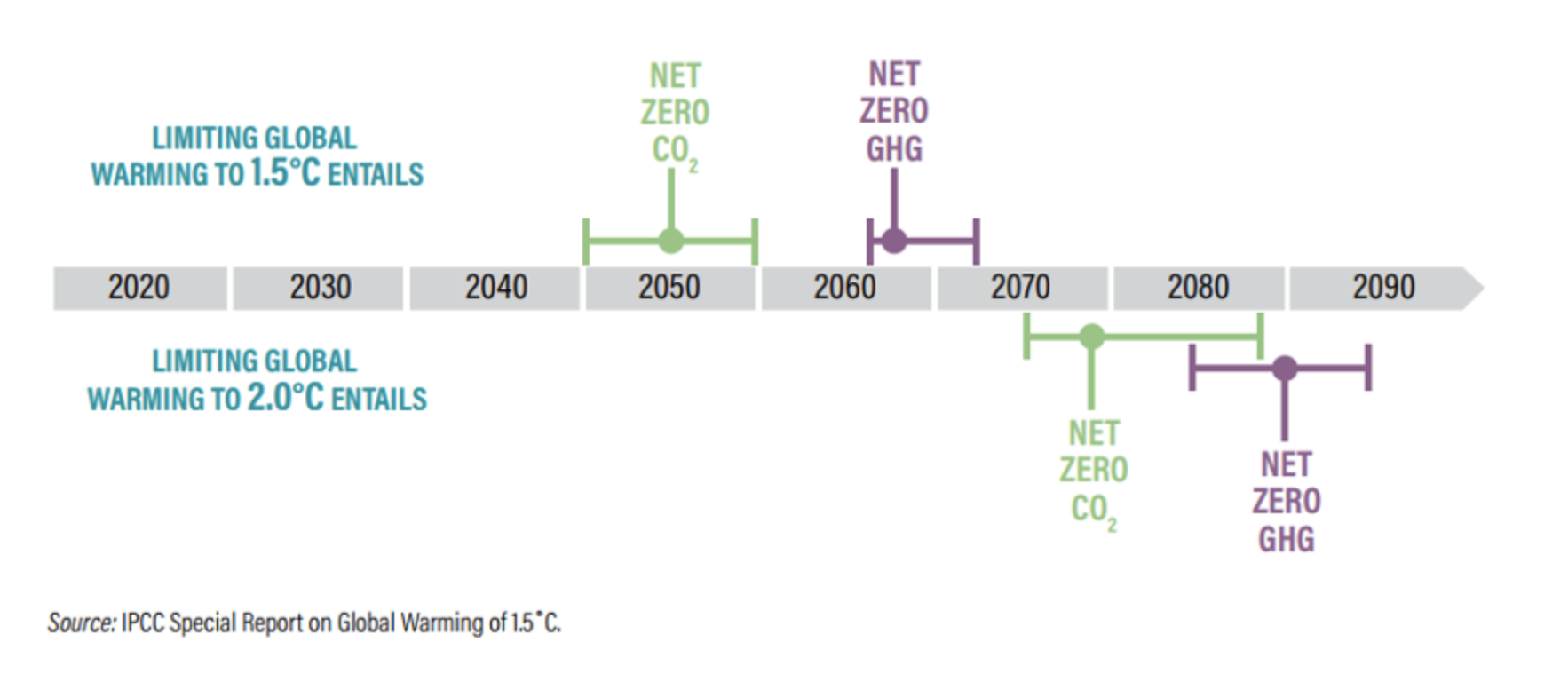
- Why Are Long-Term Strategies Necessary?
Ambitious long-term strategies are vital since current near-term national climate plans (NDCs) are only sufficient enough to limit warming to 2.7-3.7 degrees C (4.9-6.7 degrees F).
long-term strategies provide a pathway to a whole-of-society transformation and a vital link between shorter-term NDCs and the long-term objectives of the Paris Agreement.
the 30-year time horizon, these strategies offer many other benefits, including guiding countries to avoid costly investments in high-emissions technologies, supporting just and equitable transitions, promoting technological innovation, planning for new sustainable infrastructure in light of future climate risks, and sending early and predictable signals to investors about envisaged long-term societal changes.
- What Are the Key Elements of Long-Term Strategies?
- a long-term vision;
- sustainable development considerations;
- mitigation elements
- adaptation elements
- sectoral strategies(including policies and actions, milestones to be achieved over time, information on managing the transition to the long-term goals, among others)
- implementation approaches;
- and monitoring plans and revision processes.
- What Are Important Considerations for the Development of a Long-Term Strategy?
Political leadership
Institutional arrangements
Legal frameworks
Stakeholder engagement
Vanishing Places
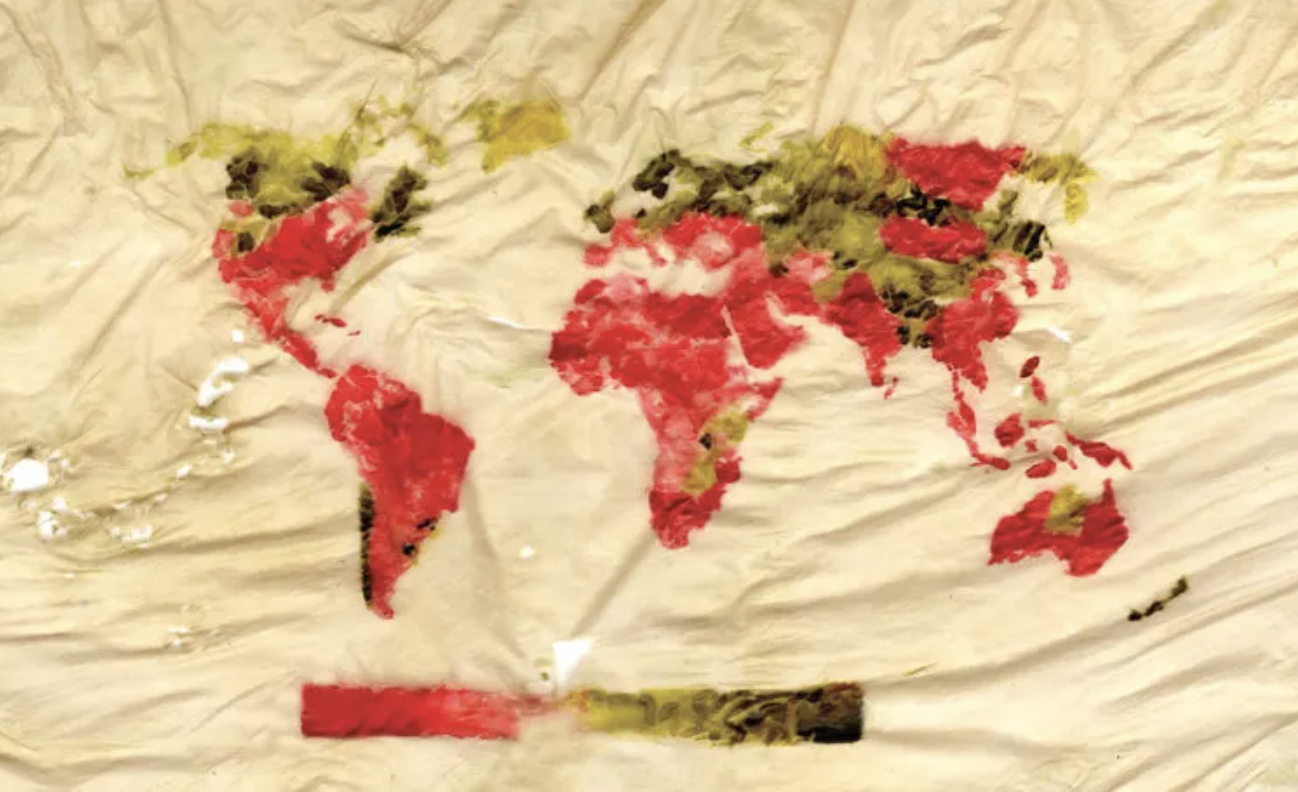
WHAT MAKES A PLACE VULNERABLE TO CLIMATE CHANGE?
Whilst climate change can affect all of us, there are some areas that are more at risk than others. These places tend to have one or more of the following characteristics:
- Low lying
- Icy
- Located on or near coral reefs
- Dry
- High levels of poverty
- Poor internal infrastructure
- Dependent on agriculture
THE GREAT BARRIER REEF
Whilst unsustainable tourism has caused reef damage, climate change is the greatest threat to the 2100 mile ecosystem. How does climate change damage the reef? A number of reasons. Oceans are becoming warmer and more acidic which leads to coral bleaching, whilst changing currents and extreme weather mean the reef is more exposed to damaging events.
THE SOLOMON ISLANDS
The Solomon Islands are part of a slew of pacific idylls that are experiencing the blunt force of climate change. The islands are low lying, meaning that very small rises in water levels can have noticable effects. Eroding soils are causing crop failures, with food security proving to be a pressing issue.
ANTARCTICA
Antarctica has seen air temperature rises of 3 degrees, which is a lot if you consider that global temperature rise needs to be limited to 2 degrees in order to avoid catastrophe. The effects of climate change are perhaps clearest in the arctic, where melting sea ice can be easily measured and the area in general is more sensitive to small temperature changes – meaning the area acts almost as a barometer for global warming.
THE ALPS
Whilst mountain climates are usually stable, the climate in the Alps has changed dramatically over the last century, with temperatures rising two degrees. There is less snow, glacier melt has been observed, and rocks are beginning to crumble where water melts and then refreezes repeatedly.
VENICE
Venice is a UNESCO world heritage site that has always been susceptible to floods. Rising sea levels will increase the frequency and severity of these floods, with some speculation that the city could be submerged completely within 100 years if nothing is done to halt global warming. In a worst case scenario, the Mediterranean sea is forecast to rise 140cm before 2100.
THE MALDIVES
The Maldives is the lowest lying country in the world, meaning any change in sea levels will have noticeable effects. The country also rests atop coral reefs, which will face the same threat of bleaching and species degradation as the Great Barrier Reef.
GLACIER NATIONAL PARK, MONTANA
Glacier National Park currently has 25 glaciers, although in three decades there may be none left. Late summer droughts, due to early snow melts, mean that farmers who depend on melt water for irrigation are struggling to produce the crop yields that they once did. Whilst Glacier National Park is one of the most dramatic examples, other mountainous national parks in the US are seeing similar weather patterns.
SUDAN
70% of people in Sudan are dependent on agriculture for their living, whilst 80% depend on rainfall for their water. Whilst there are many reasons for the ongoing conflict in Sudan, climate change is thought to be a serious influence.
BANGLADESH
Its physical characteristics mean that it is especially sensitive to the impact of climate change. Bangladesh will be susceptible to floods and extreme weather events like cyclones and drought. As much of the population depends on agriculture for their livelihoods, the economic effects could be severe. The lack of robust infrastructure mean that any natural disasters could prove hard to recover from.
The Big Thaw
“if the warming accelerates dramatically and if polar ice melts even faster, the results could be catastrophic. This could occur if the Greenland ice sheet or the West Antarctica Ice Sheet (WAIS) collapses, triggering a significant rise in sea levels throughout the world with particularly devastating impacts on populations living in low-lying coastal areas.”
—— Elizabeth Ferris’s interview to Obama
Step 5: Initial Idea
Based on my research, I start to develop my initial idea. Those ideas will be connected with those 5 key points. I will mainly focus on science and engineering which is not my major, but I always believe thinking is the first step of creating. Therefore, my ideas will be created by my limited understanding of science, it still need more supporting on major information of science.
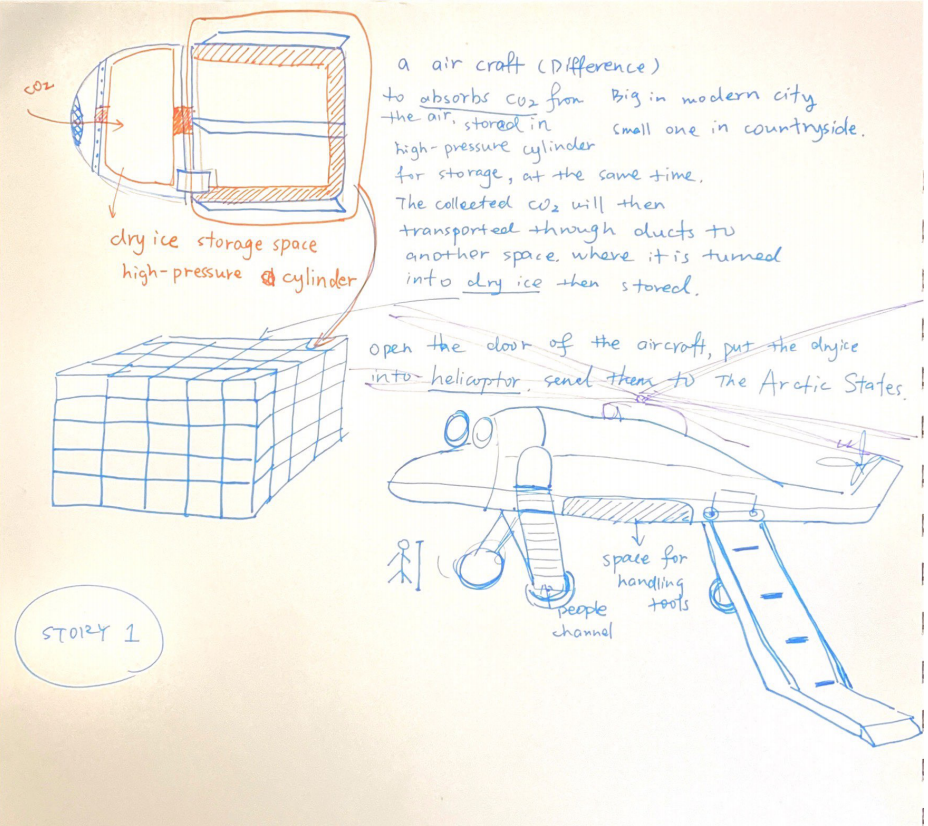
Idea 1: Build large dry ice makers that capture carbon dioxide from the atmosphere and make dry ice, which is stored in the Arctic and South Poles.
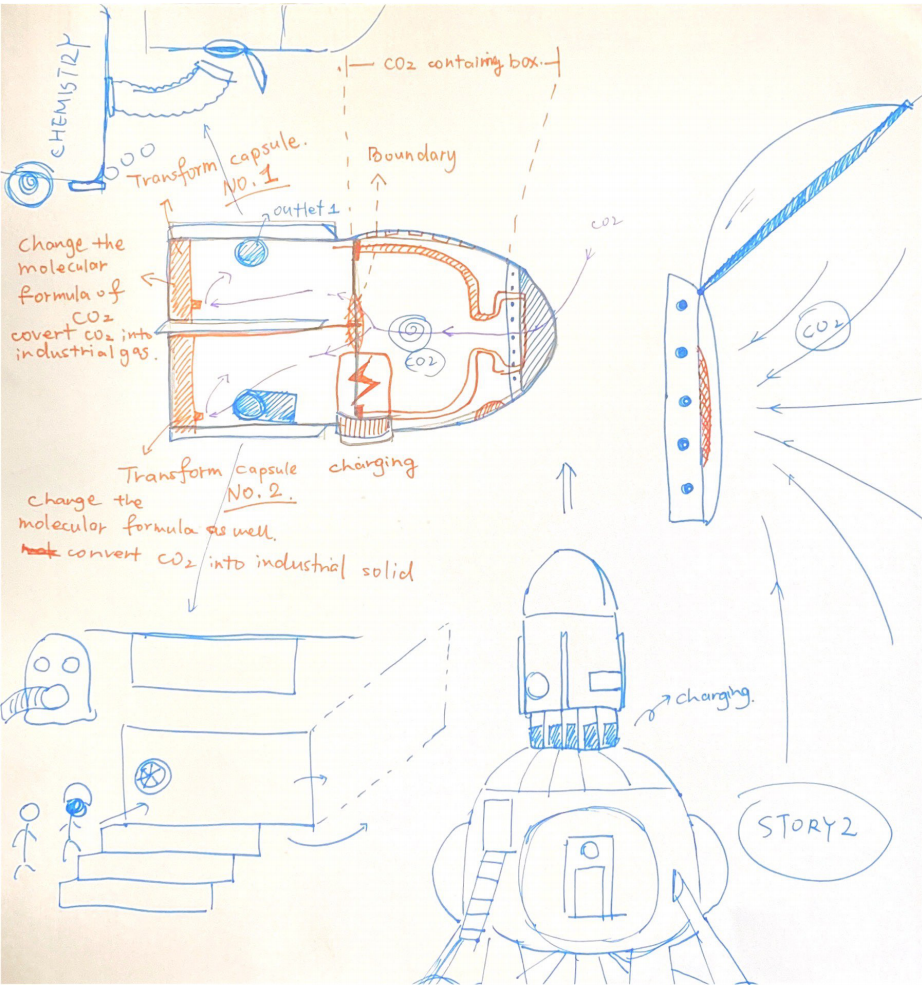
Idea 2: To build drones that can absorb greenhouse gases in the atmosphere, so that the drones can process the collected greenhouse gases into gases that can be used by human industry, and change the molecular structure of the greenhouse gases, forcing them to become solid and be used by industry.
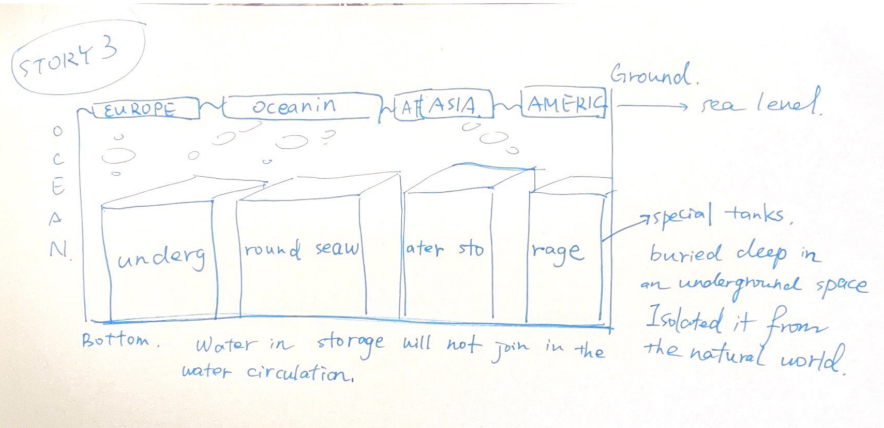
Idea 3: Better to be sparse than blocked.Build underground seawater storage bases around the world,Just keep the excess seawater out of the water circulation.The seawater is stored in special tanks and buried deep in an underground base to insulate it from the natural world. And in the next few thousand years, using spaceships to stun other planets for terraforming.
Storyboard:
I finally select the second idea to make, because it looks easier to realize than the other. In the future, I will continue to learn special effects technology to try to make my first two ideas.

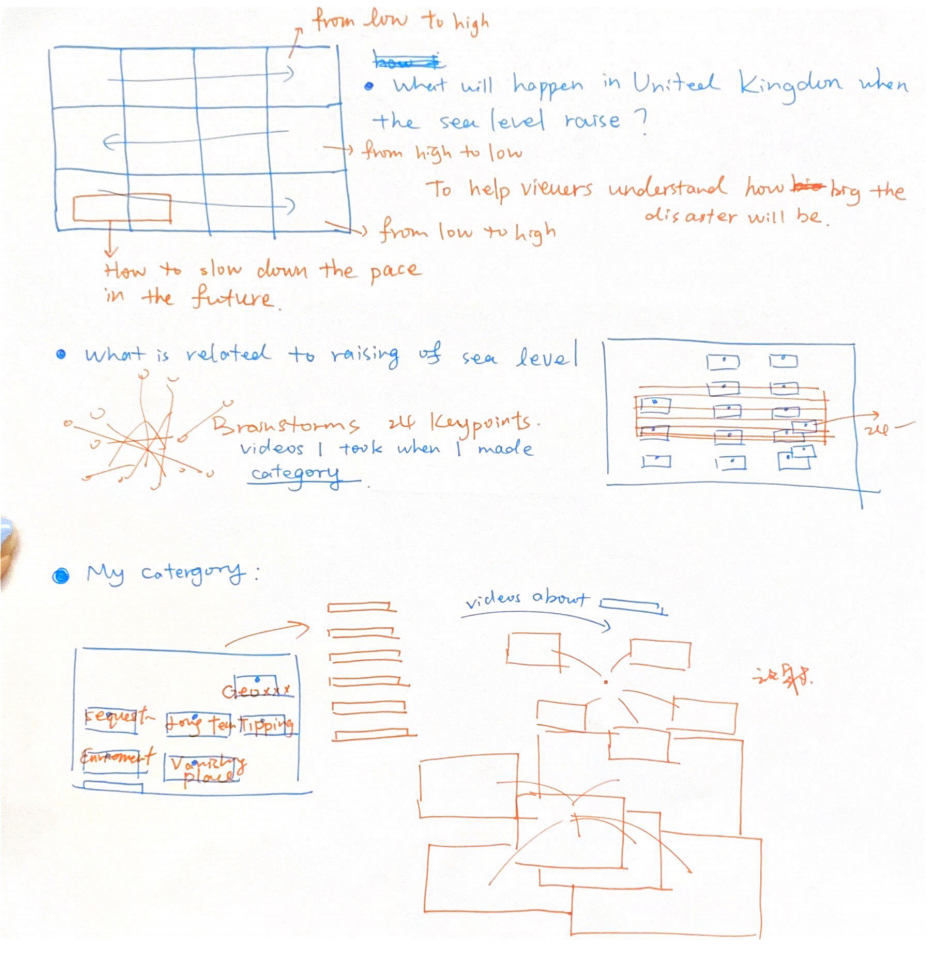
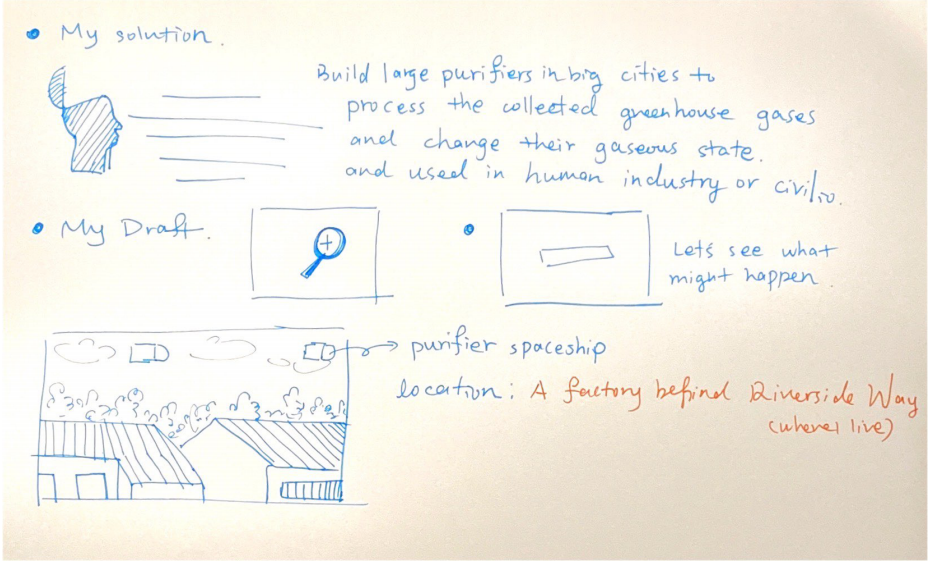
In this video, In order to help viewers understand easier, I borrowed some short science video pieces to show what I was trying to say.
This is a fragment shows how the sea level change with the time goes by from 2m to 700m in United Kingdom, it is very intuitive, I put it in the beginning of my film.
This a fragment showing the main concept of GEOENGINEERING. Since this word is a scientific term, IN order to give the audience a basic idea, I chose this short video to explain it.
This is a metaphorical video intended to express tipping points.
This fragment is a small introduction about vanishing place. Almost all the High-risk vanishing places are Coastal cities or islands. In the second half of the video, the world map, red marks the land that has been submerged by the sea.
This is an animation showing Sequestration. It tells us the whole process of Plants store carbon as they absorbing carbon dioxide (CO2) during growth. Trees and plants absorb carbon dioxide and produce oxygen, preserving forests is key strategy to help reduce global warming and can help mitigate carbon dioxide emissions.
Final Film:
